We get George and his downhill buddies to put three full face helmets light enough for trail use to the test.
I’d like to think that I was assigned this product test because of my literary ability to translate complex product information into real world experience. In reality it probably came down to “George smashes a lot of helmets, let’s ask him to do it”. And they would be right. There were two last year, a Fox Rampage Carbon Pro and a Troy Lee Designs Carbon D3; both on the same (expensive) day and a couple of visors at other points in the season as well. If memory serves I destroyed exactly the same amount of product in 2018 so I’m consistent if nothing else and at some point over the last few years I’ve worn most brands.
During that time I’ve stood on the sidelines watching the ‘full face trail lids’ genre grow without actually taking the plunge. Alongside the two traditional full face helmets I have for DH or big mountain enduros I have three (I don’t know why three either) open face helmets for trail riding. So, alongside this product test the bigger questions I’m asking myself are do I need more helmets (surely five is enough) and perhaps more importantly, do I need something that fits somewhere between the two?
Given this lack of exposure to the genre I drafted in a few reinforcements. From the Making Up The Numbers race team Binnsy and Neil got involved and to provide a more ‘trail friendly’ opinion Ben Newton from WeRide joined the party. As well as a full day of testing at Revolution Bike Park we’ve worn these helmets day in and day out for the last three months which should be plenty of time for us to form a decent opinion.
Right then, let’s get cracking…
On Test
- Endura MT500 – RRP £189.99 – size M/L
- iXS Trigger – RRP £189.99 – size M/L
- 100% Trajecta – RRP £229.00 – size L
What do these helmets have in common? Well, all three have excellent ventilation, a huge advantage no doubt when you’re dropping down into Allemand in mid-July, sprinting to try and finish the Megavalanche in under an hour. Not so much on the Freeride line at Revolution mid-December. “****ing hell it’s cold” was literally everyone’s first response regardless of which helmet they were testing. Whilst someone with a physics qualification will probably tell us “that’s not actually possible” we’re convinced that they all feel colder than just wearing an open face trail lid.
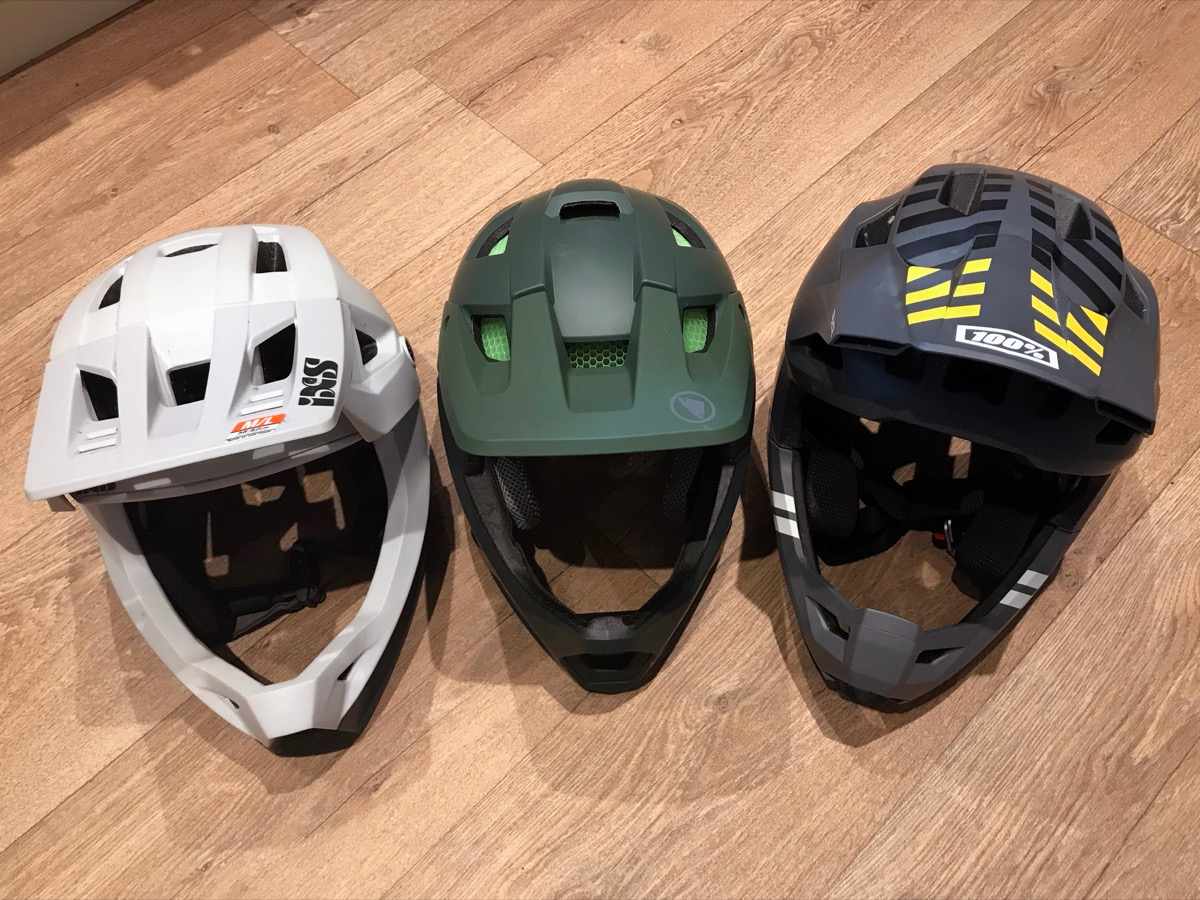
What else? Well, all three have a fixed chin bar so there’s no option to remove it for the climbs. None have MIPS, although the 100% does have their own Smartshock Rotational Protective System which claims to similarly protect against rotational impacts. Despite their light weight, and wear-all-day trail intentions, all are DH level certified.
Endura MT500
- £189.99
- Size tested: M/L (for 55-59cm heads)
- Actual weight: 650g
- From: Endura
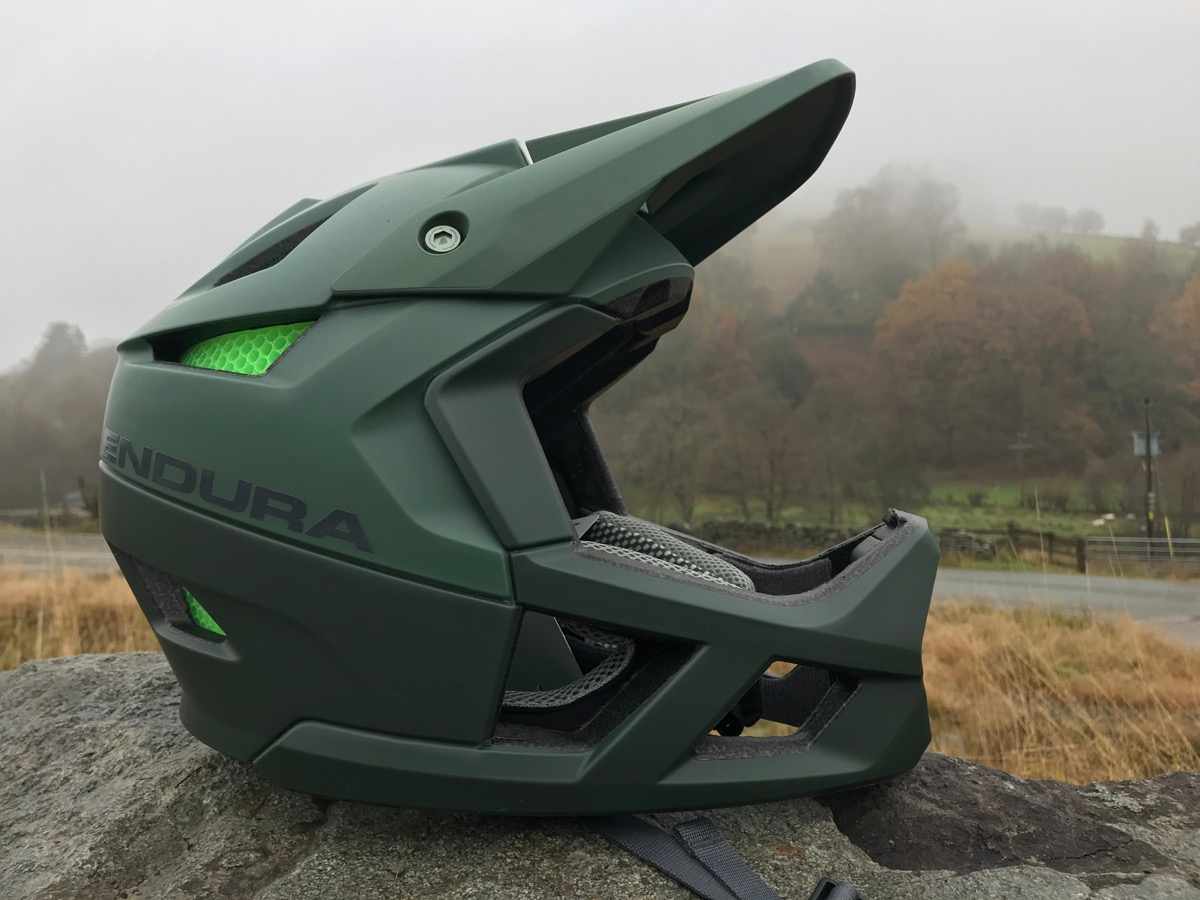
Kicking things off, in the green corner we have the Endura MT500 (it’s very green but also available in black). It’s the claimed to be lightest on test with a weight of 640g for the M/L – though we weighed ours at 650g and exactly the same as our iXS Trigger. Endura has achieved this weight using Koroyd, an energy absorber which manifests itself as a honeycomb shell that runs around the inside of the helmet. Although the Koroyd covers the vents it doesn’t noticeably affect the air intake and it does increase the feeling of security. It’s also present in the middle section of the chin bar which has both positive and a negative effects. Good: the honeycomb structure acts as a filter, keeping mud out of your mouth. Bad: when you breathe heavily through it, it turns into a Darth Vader voice box and Ben in particular found it a bit off putting. Although there is an internal EN, ATSM and CSPC certified skeleton, the chin guard feels quite close to your mouth which is also a bit unnerving.
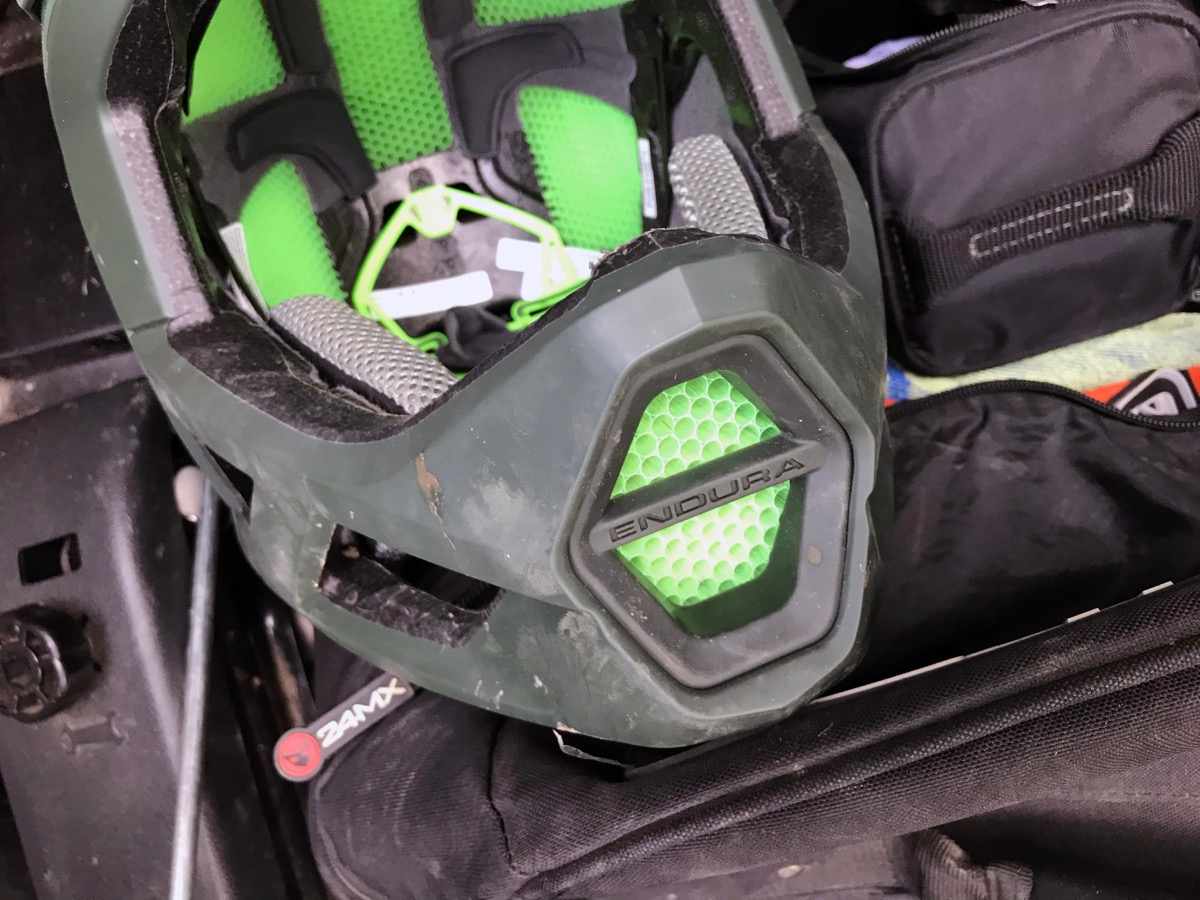
The Endura is visibly smaller than the other two helmets and whilst it comes with two sets of cheek pads the fit is very narrow and very tight. Initially it felt like it was going to be quite uncomfortable but once you get the fit sorted it’s actually OK. Fine tuning is done via an adjustable rear cradle and the strap is magnetic which, if you’re coming at this from the world of trail lids will most likely be second nature.
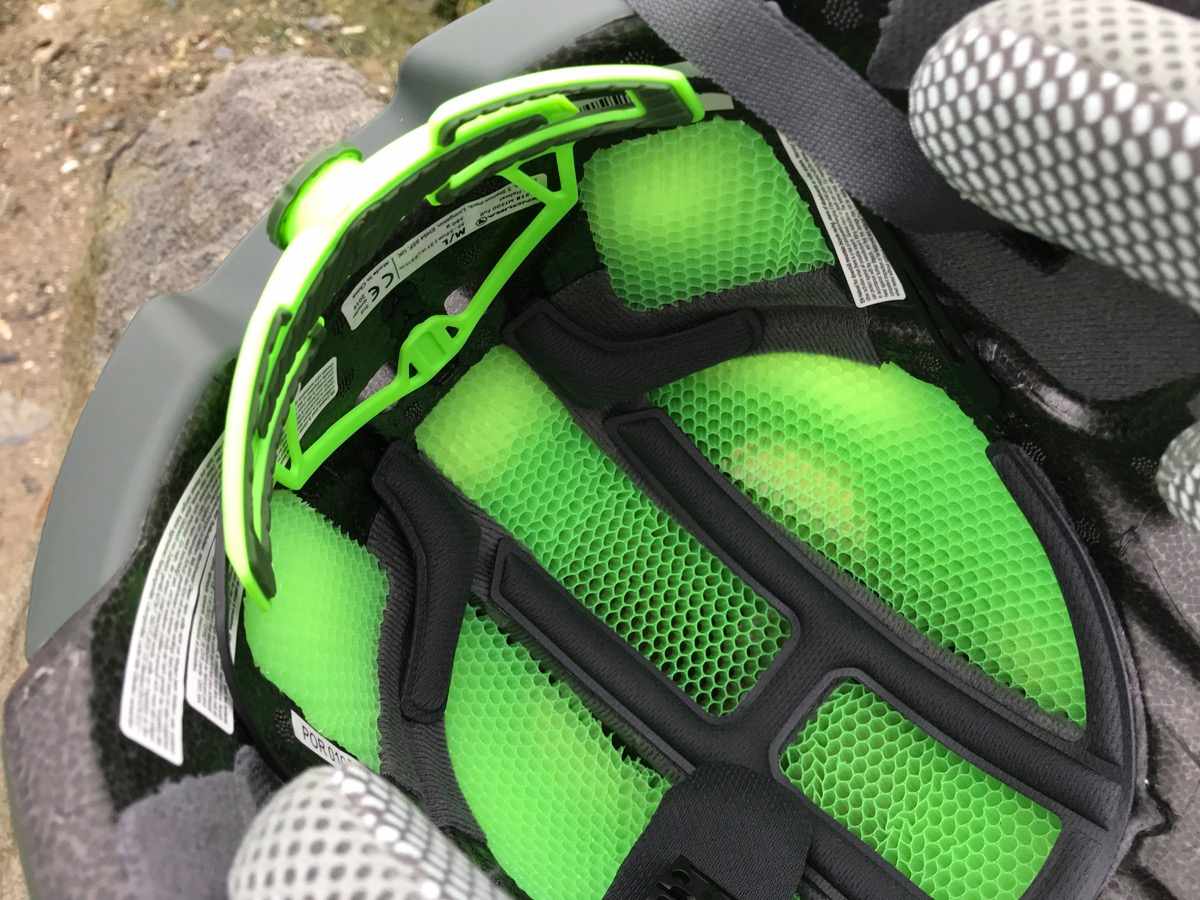
The peak sits low in the eyeline and can’t be moved which is annoying. With the MT500’s narrow structure it’s quite a tight fit to get goggles in and when you want to take them off you can’t just push the peak up and put them there, you have to take them off completely.
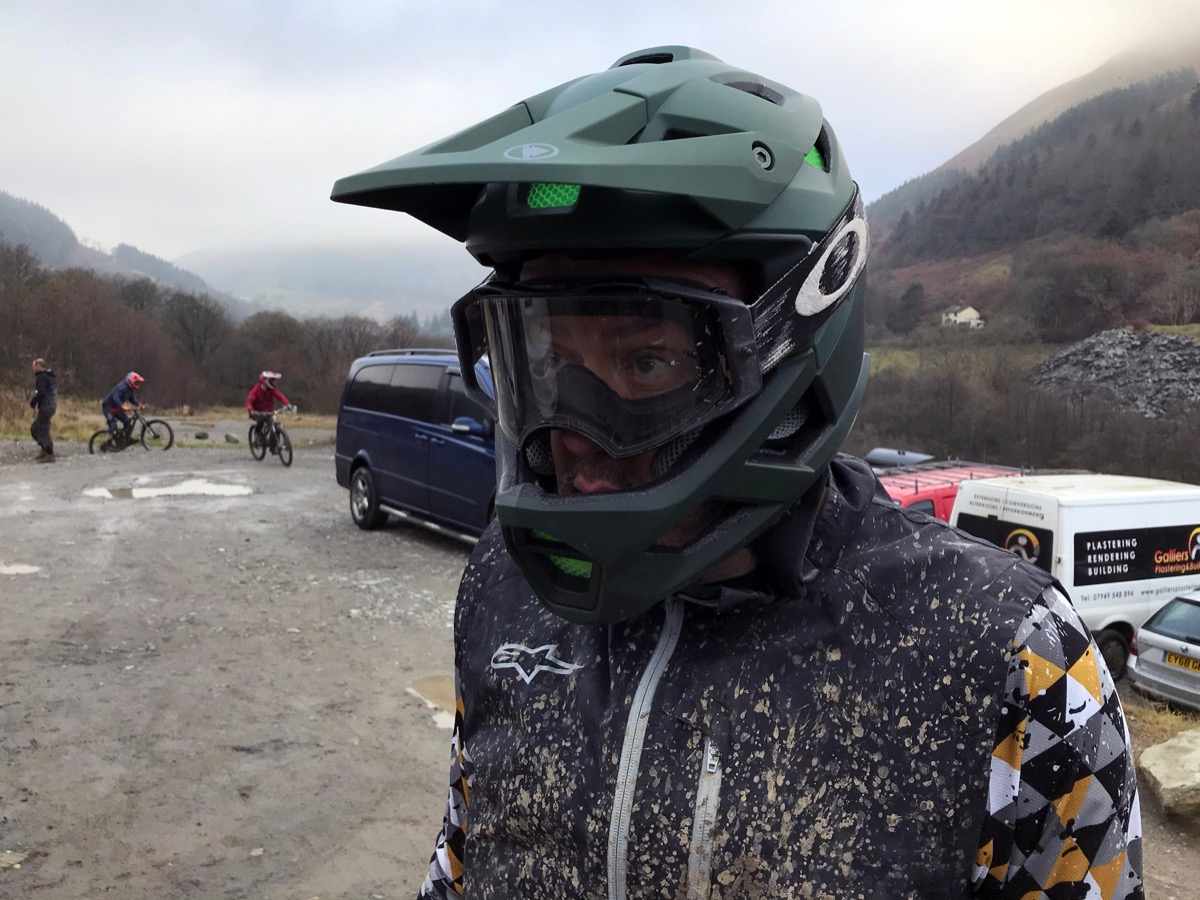
Whilst this helmet scores highly for technology, it scores pretty low for usability. It feels like Endura have put the majority of their focus into making the lightest helmet on the market and it’s gone straight from the drawing board into production. If weight is the deciding factor in your decision, you ride with glasses rather than goggles and/or you have a smaller head then it’s worth considering. Endura also offer a 90-day satisfaction guarantee so you could always try it obligation free.
iXS Trigger FF
- £189.99
- Size tested: M/L (for 58-62cm heads)
- Actual weight: 650g
- From: Hotlines
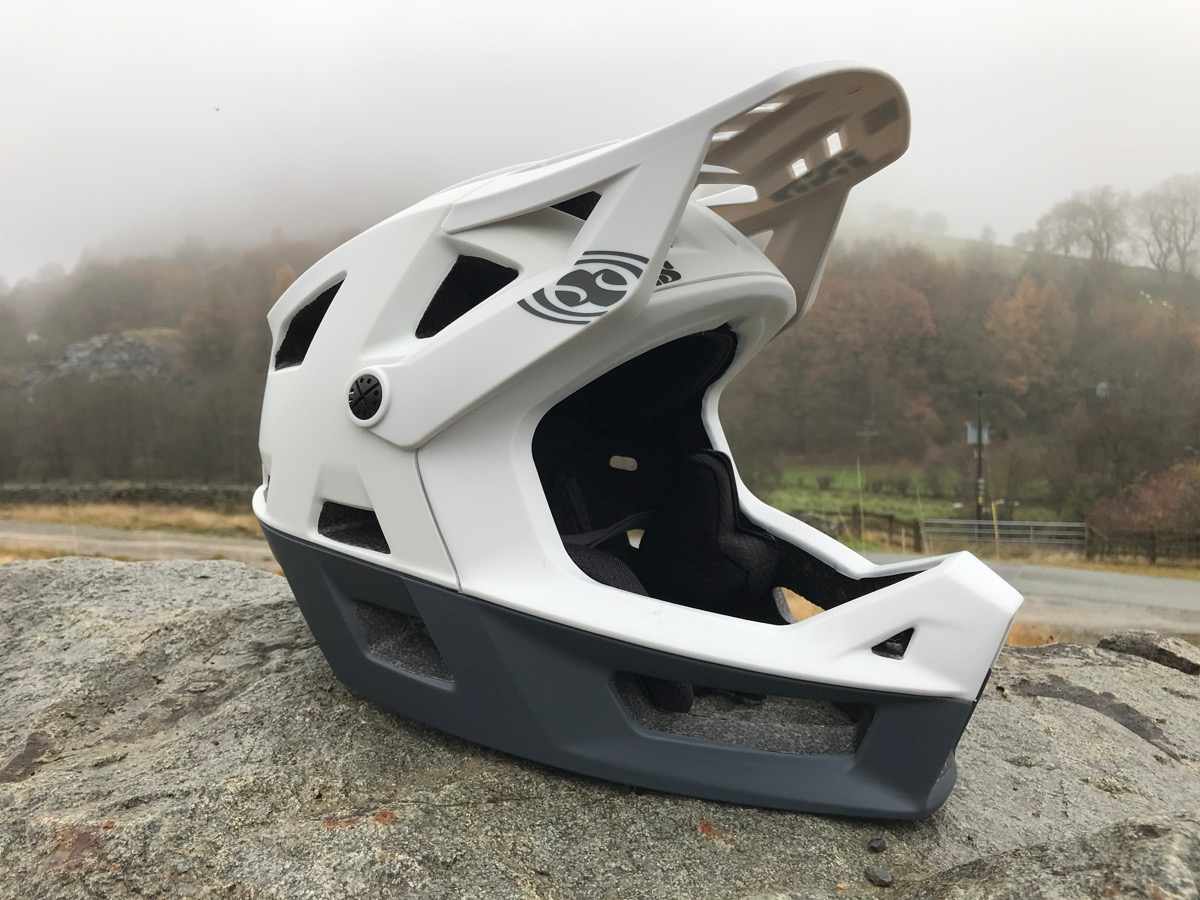
One thing we can be sure of is that IXS love a trademark or seven. Prepare yourself…
The Trigger has an internal X-FrameTM; an EN and ATSM certified skeleton that runs from the ears through the chin guard. Then there’s the VortexTM moulded aeration system; we counted 23 air intake ports which means it’s pretty well ventilated. There’s also the IXS specific ErgoFit UltraTM retention system which “allows horizontal and vertical adjustment with precision interlocking”. Translation: the adjustable cradle that you use to fine tune the fit can be moved internally. There are three ‘plug and play’ options in the EPS foam base but this means that the head ring comes out pretty easily and Binnsy, being a big believer of “if you have to read a manual it’s poorly designed” thought he’d broken the helmet before he’d even put it on. And finally, we have the integrated FidlockTM magnetic closure system which as far as we can see is very similar to the one on the Endura.

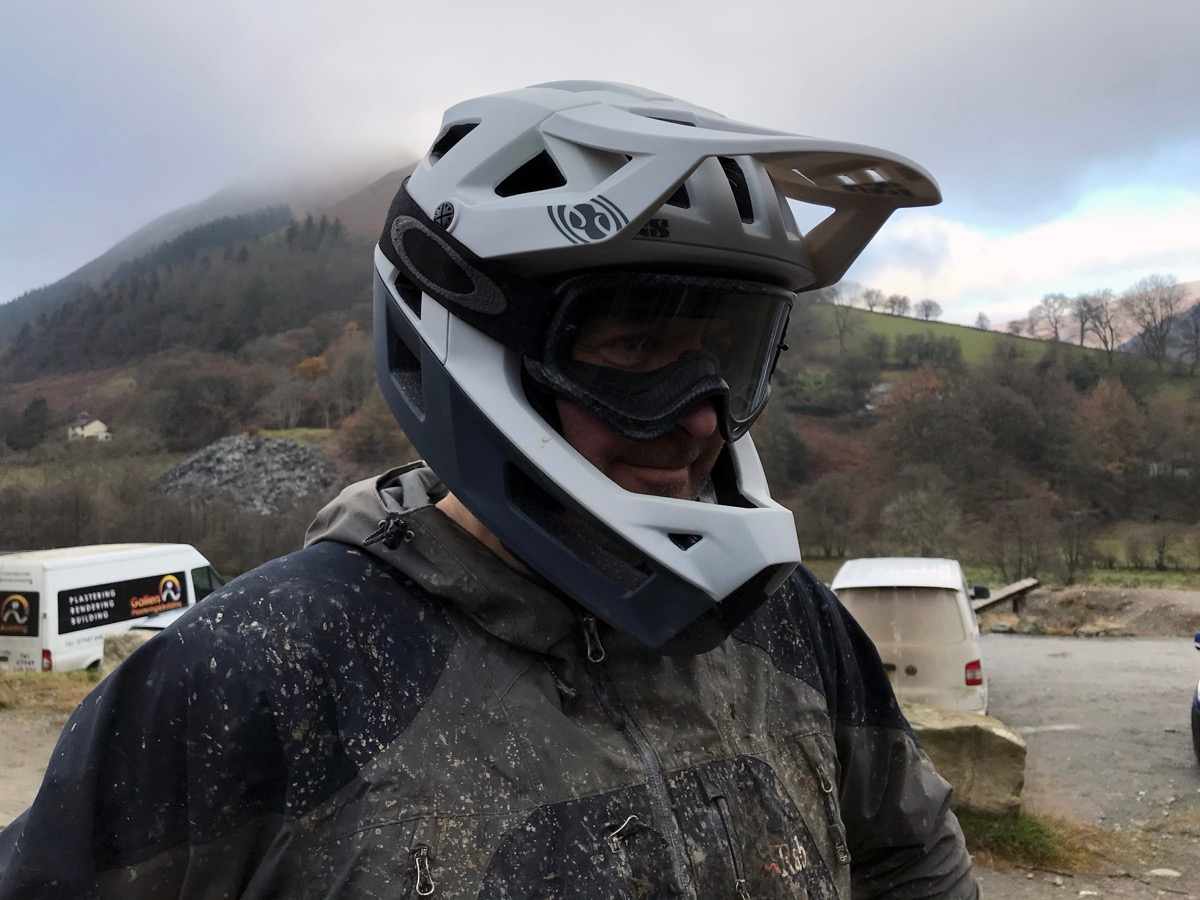
The Trigger is available in five colourways and it looks great. The thing we liked best about the Trigger though is the fit; it just felt really natural straightaway. Fine tuning via the adjustable rear cradle gives that trail lid feel, there are vents around the ears so you can easily hold a conversation and the visor is adjustable and pushes up enough to allow you to put your goggles underneath it, there’s even a little serrated bit on the back to help keep your goggles in place.
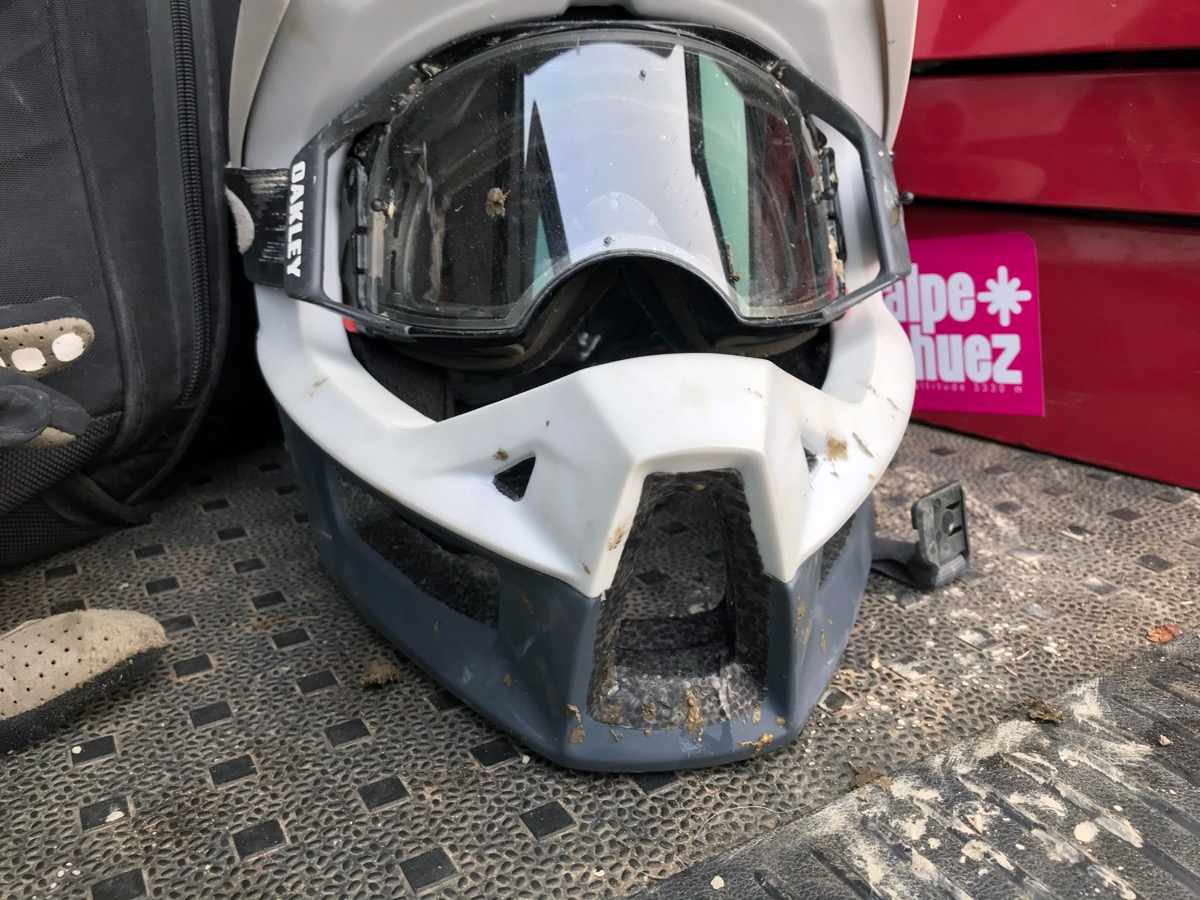
The downside of having vents around the ears are that it’s quite noisy when you’re riding which gives the impression that you’re going faster than you actually are. This wasn’t to everyone’s taste.
IXS claim it’s the lightest full face on the market – and our scales say it’s a tie with the Endura – but that didn’t really matter, we all liked it and even after a full day in the saddle I wasn’t desperate to take it off.
100% Trajecta
- £229.99
- Size tested: L (for 58-61cm heads)
- Actual weight: 880g
- From: Silverfish
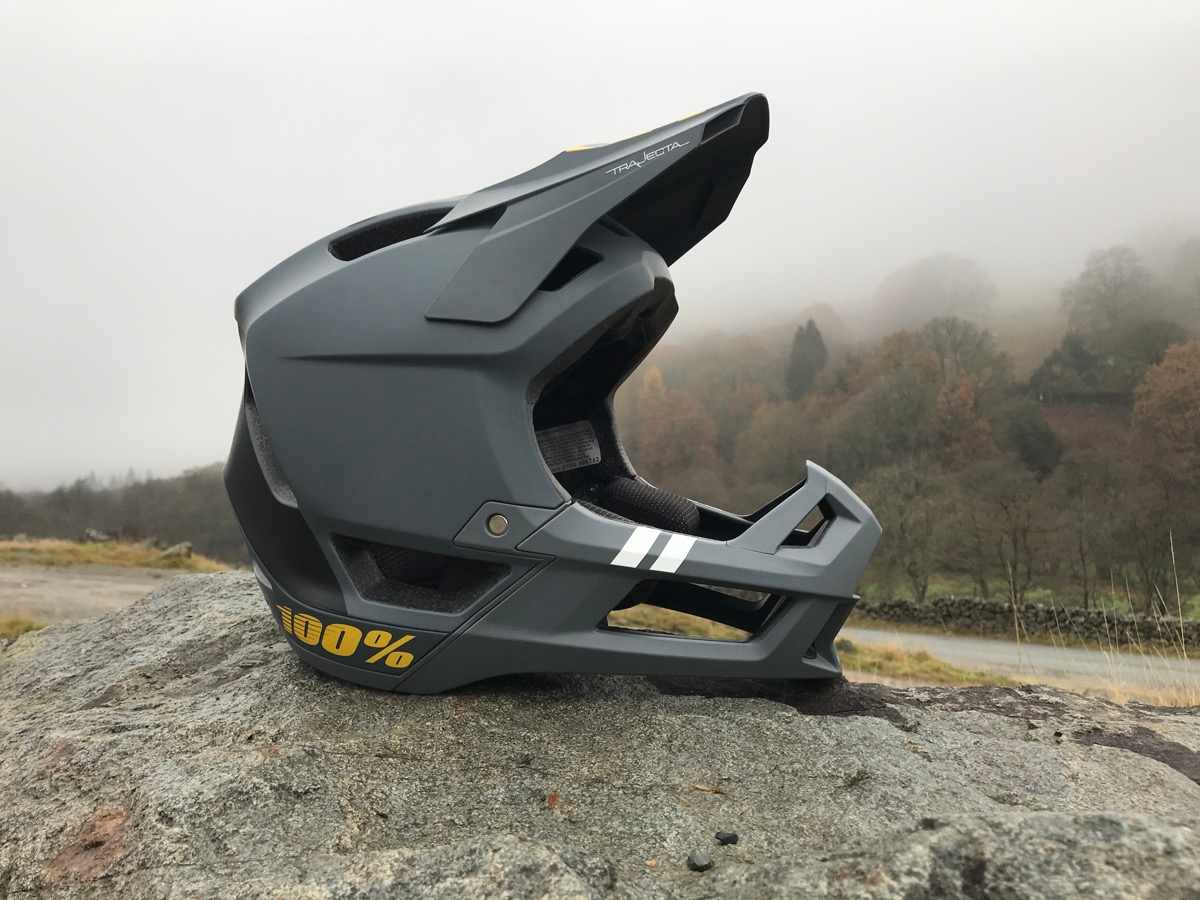
As soon as you put the Trajecta on it’s quite noticeably the daddy of the three. At 860g claimed weight and 880g actual (on our scales), it’s the heaviest, although this wasn’t really noticeable when riding and with its d-ring fastening and lack of an adjustable cradle it feels the most like a traditional full face. If you’re not used to fastening a d-ring it can take a bit of getting used to but it’s worth persevering with as it does feel more secure. The strap is long enough so you can slide your head out without undoing it completely every time you unfasten it which is a godsend.

The Trajecta is the most expensive helmet on test but it does feel the most high end. The pads are soft, it has a removable washable liner and Smartshock technology – 100%’s own system to protect against rotational impacts.
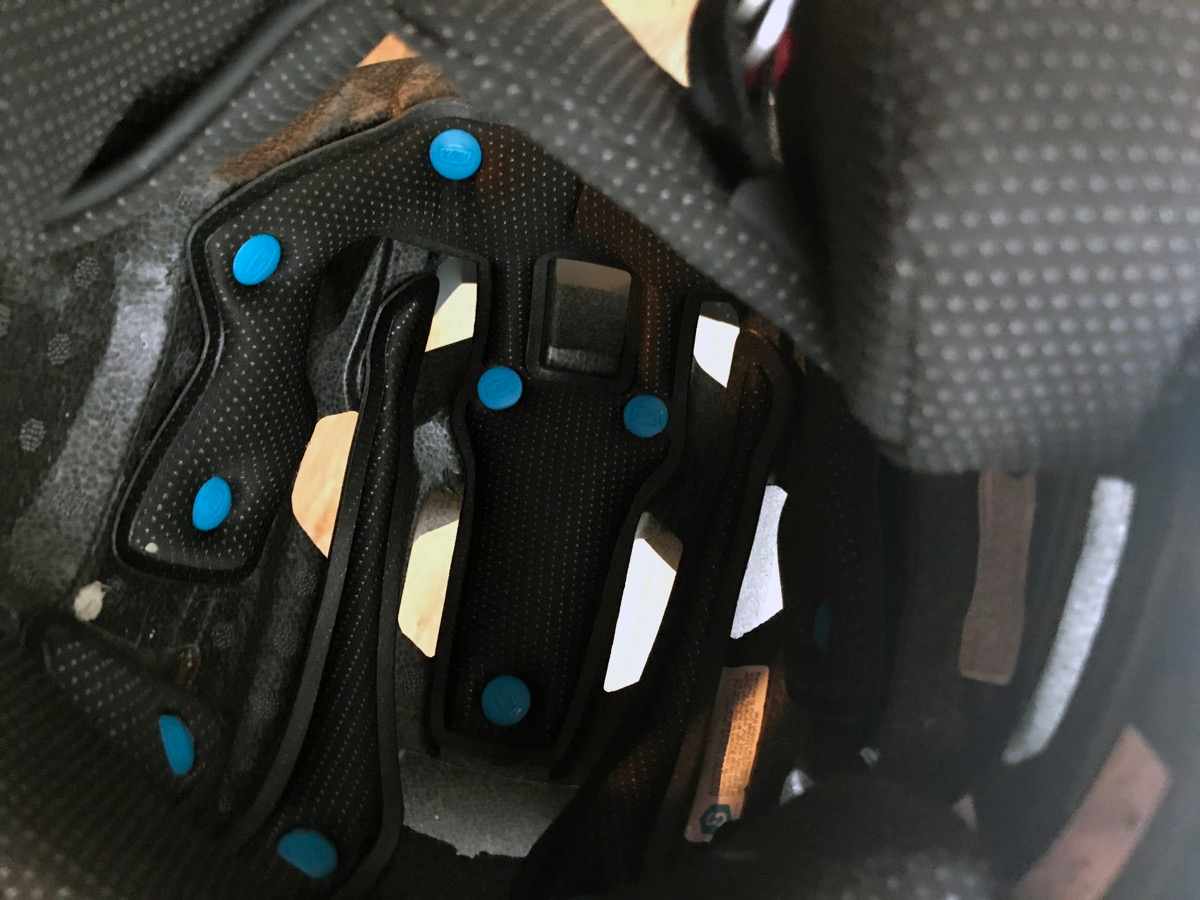
Like the IXS helmet, internally it’s constructed of multi density EPS foam. Swapping out the padding is a pretty straightforward task, but you need to make sure you get it dialled before you leave because there’s no adjustable cradle to fine tune. It’s fully ASTM, CPSC and CE certified and available in several colour options to suit most tastes. Looks wise it’s clearly based on 100%’s successful Aircraft helmet and visually we found it the most appealing.
Like the iXS the open mouthpiece is great when you’re gasping for oxygen but during the wet winter months mud can get thrown up into your mouth which is never pleasant. An attachable gauze would overcome this and would be a great feature as long as it doesn’t make you sound like Darth Vader!
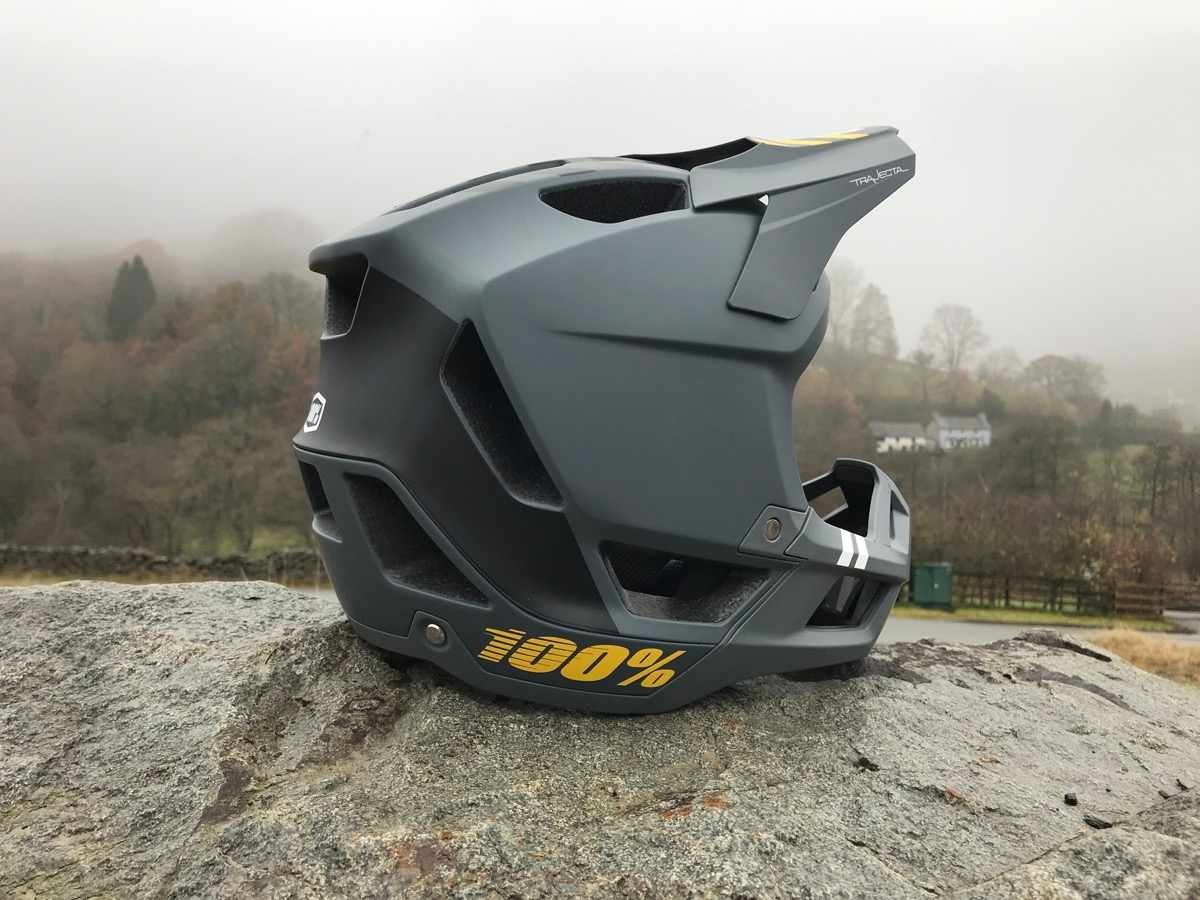
We had no problems achieving a great fit for most popular brands of goggles and the indents of the helmet kept the goggle straps centred. Like the iXS it has an adjustable visor so you can take your goggles off your face on the climbs.

There are 24 vents to keep your head cool with some huge vents at the back to release hot air. Those who disliked the iXS helmet for having vents around the ears liked how they haven’t included them here. There’s a lot less wind noise when riding although holding a conversation is that little bit more difficult.
Conclusion
Back to the original question then, do I need a ‘full face trail lid’? Well, I could definitely make a case for it. Smashing my teeth in on that wall that runs alongside that superfast section of trail on the local isn’t as much of a concern when I’m wearing one and holding a conversation is fine – although wearing headphones which I do a lot when I ride on my own – isn’t. So, yes it would be an asset for trail riding. But which would I choose?
All three helmets remain pretty true to the history of the brands involved.
The Endura MT500 feels like it’s been designed in a lab for trail riders who want a bit more protection. It’s super light and the Koroyd core is quite futuristic and techy giving peace of mind that it would do its job when called upon. The fit is super narrow though which will be great for some but not for others.
The iXS and 100% lids feel like they’ve been designed by enduro racers with that genre in mind. I love the fit of the iXS Trigger FF. It’s like your favourite pair of jeans; it has its flaws but it’s really easy to wear and because of that it’s the helmet that I’ve reached for the most when trail riding. However, I have to admit that internally it feels a bit basic and the lack of any rotational impact system is also a bit of a let-down.

The 100% Trajecta is that bit more expensive but does feel that bit plusher. It takes all the bits we liked about the iXS Trigger and adds to them with the Rotational Impact System, the washable liner, the d-ring fastener. It was the preferred choice of the majority of our testers and as such is the resounding victor.








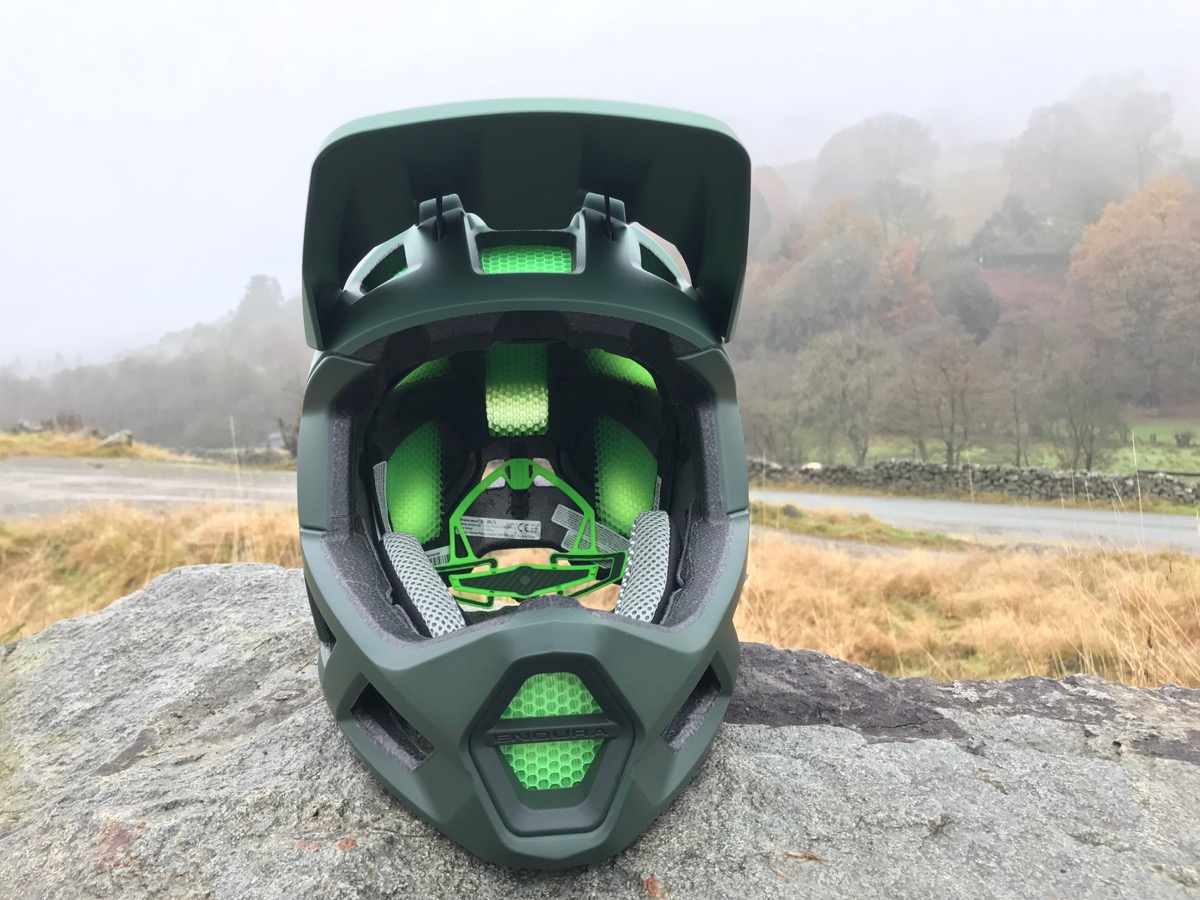

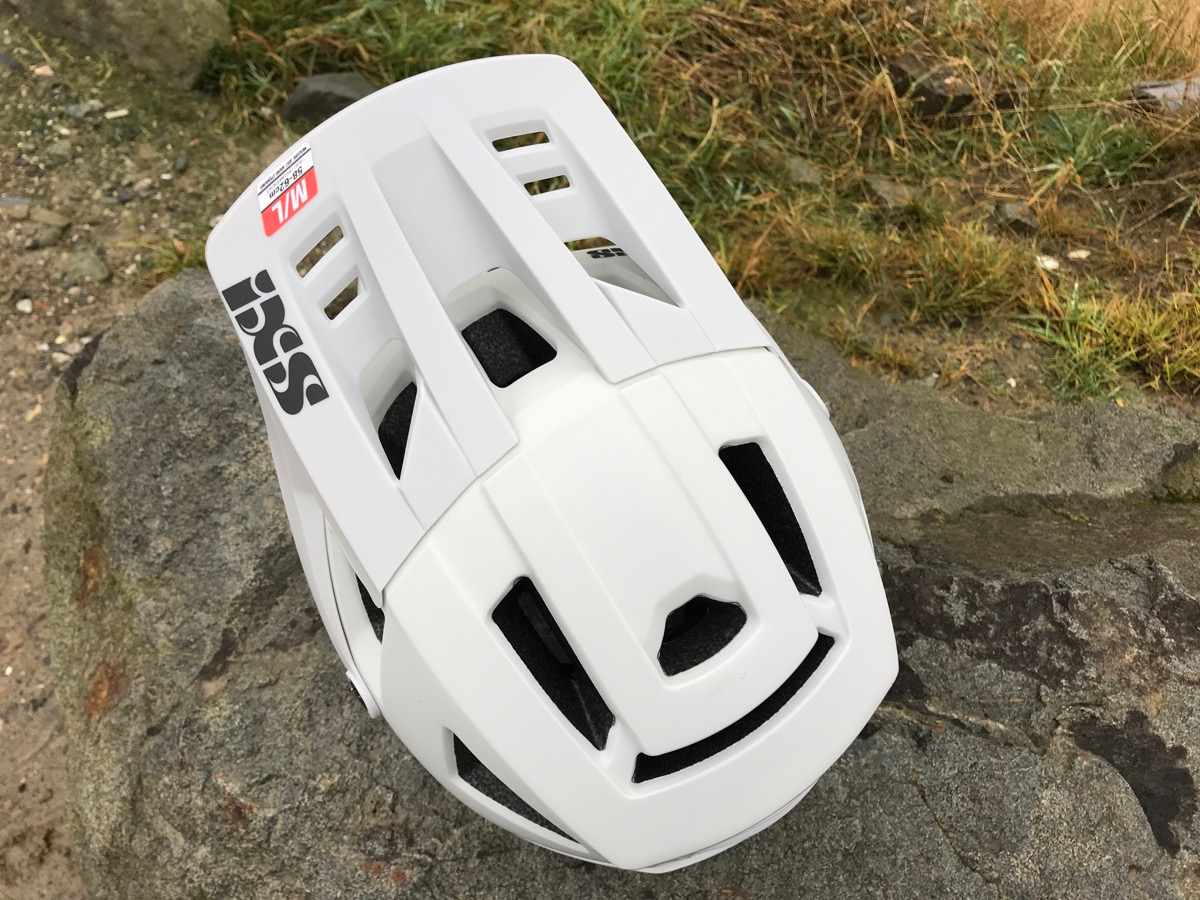
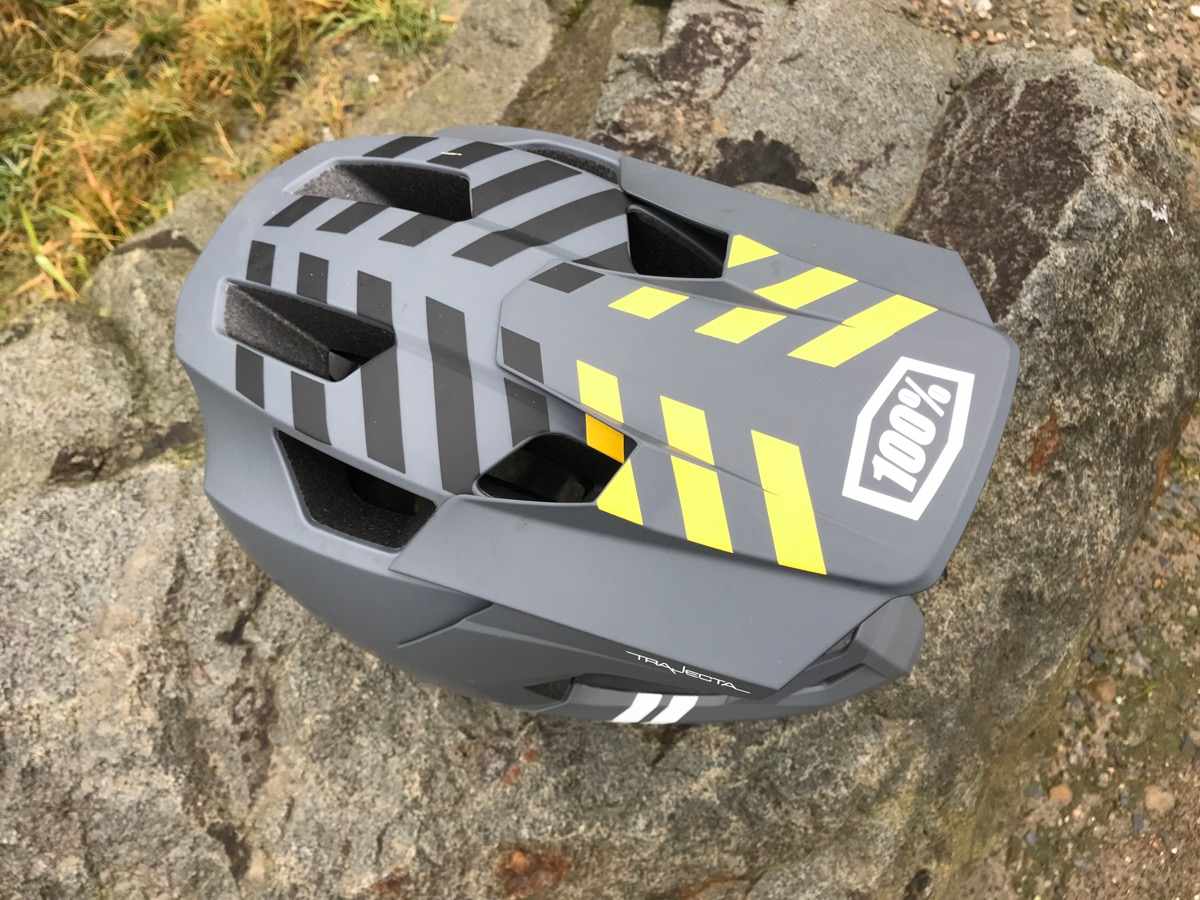
Without wanting to come over all preachy, with the exposure that concussion gets nowadays, it may have been wise to stop after trashing one helmet in one day, rather than wait for the second…
Not convinced about using one of these on public trails. I get the point at trail centres but seeing the storm troopers out in the dark peak looks intimidating to other users, especially when matched with an ebike.
With hindsight @mountainsofsussex you’re probably right. I wasn’t knocked out on either occasion (would’ve stopped completely if I had been) & IIRC medics made me sit it out for a least an hour but then they were happy for me to continue so I cracked on, heat of race day etc…
@chrismac I don’t have an ebike (yet!) but I definitely see your point. Was fine at Revolution but felt a little odd wearing them on my local trails & have to say it gave me the confidence to go a bit faster which isn’t always a good thing on a bridleway 🙂
My deal with these foam helmets is the reliability. The foam damages so easily from just wear and tear. My Trigger FF looks like some rats made a nest in it.
“Head to head.”
I see what you did there.